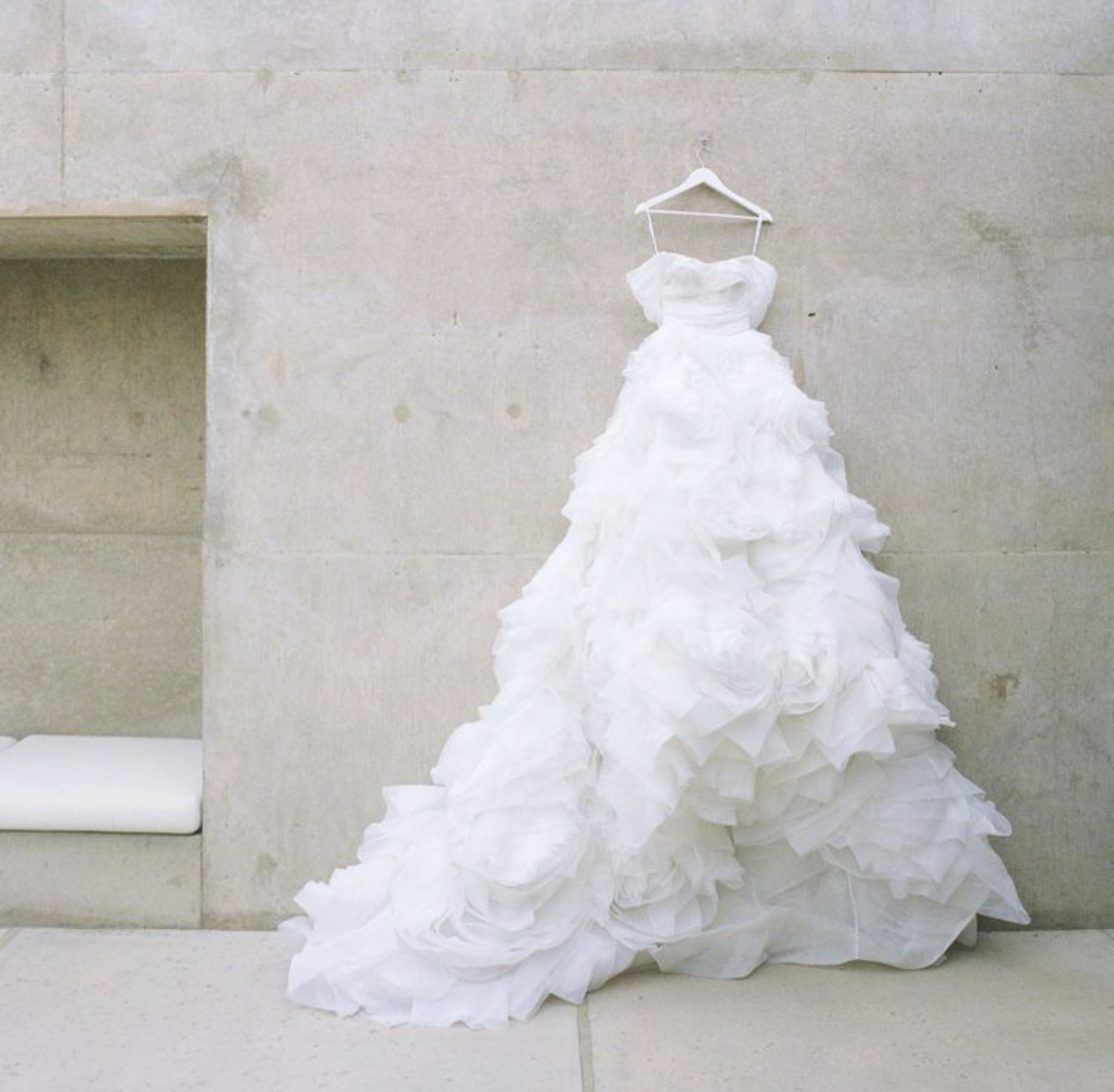You’ve found your dream wedding dress (yay!). While the hardest part might be over, there are some additional details you now have to see to, such as alterations and fittings, finding the ideal veil, and figuring out the exact science that is bustling.
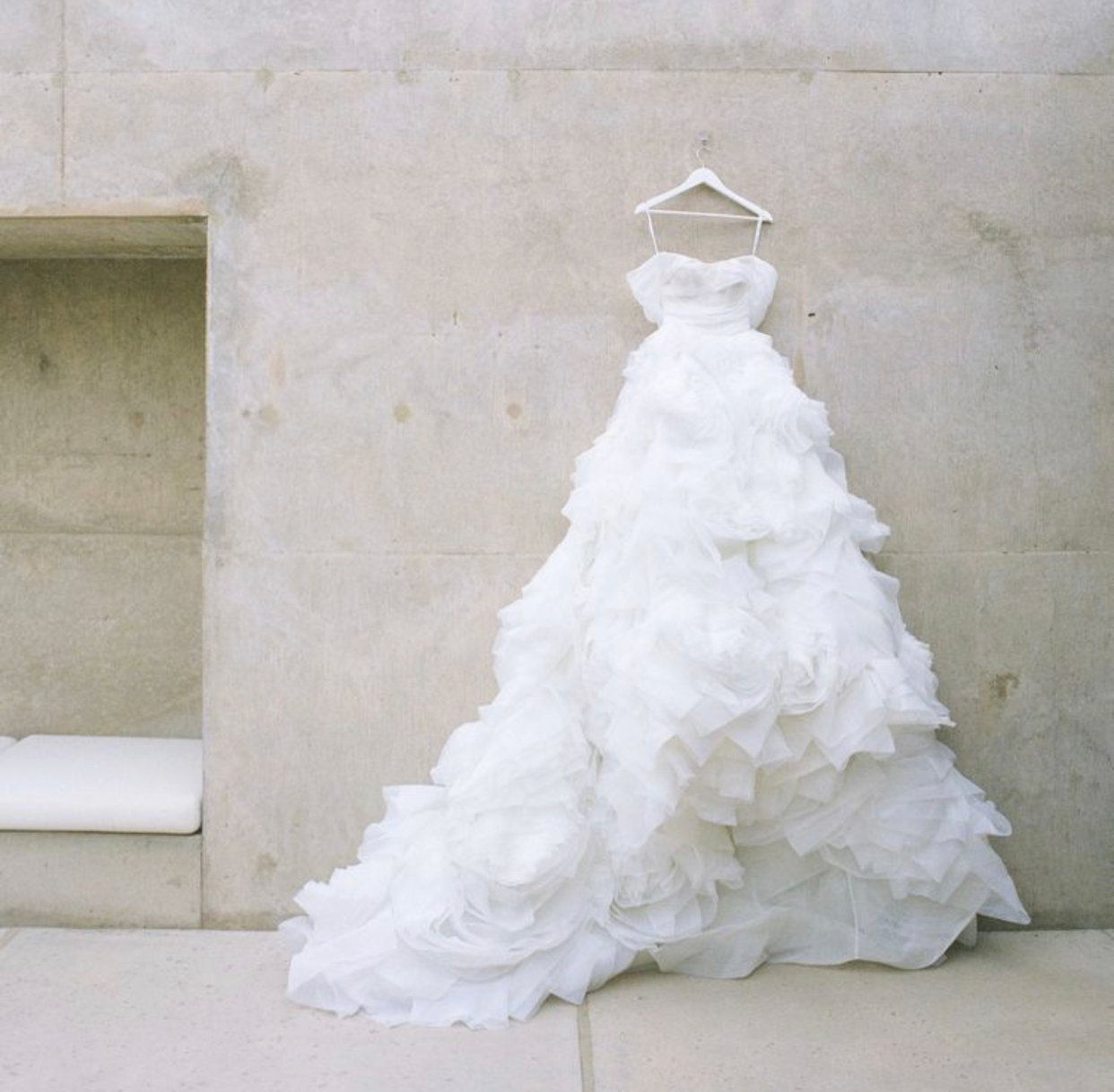
What Is a Bustle?
A bustle refers to the process of transitioning a wedding gown to function as if it has no train. “Bustle” can also function as a noun, and refer to the style once it’s sewn into the dress.
In addition to perfecting the fit of your dress, a seamstress will also tailor it to have a bustle by adding buttons, hooks, or ribbons to make it easier for you to walk post-ceremony. There are many different wedding dress bustle types to choose from, so it’s best to acquaint yourself with them before heading into your first fitting.
Also keep in mind that it’s very difficult to bustle a dress yourself (while wearing it, of course) so you will need to entrust someone with the task and make sure that they attend a fitting with you to learn the mechanics of how to execute the picture-perfect bustle—lest you dislike any back-shots of your dress, or (gasp) trip on the length of your train while busting a move on the dance floor.
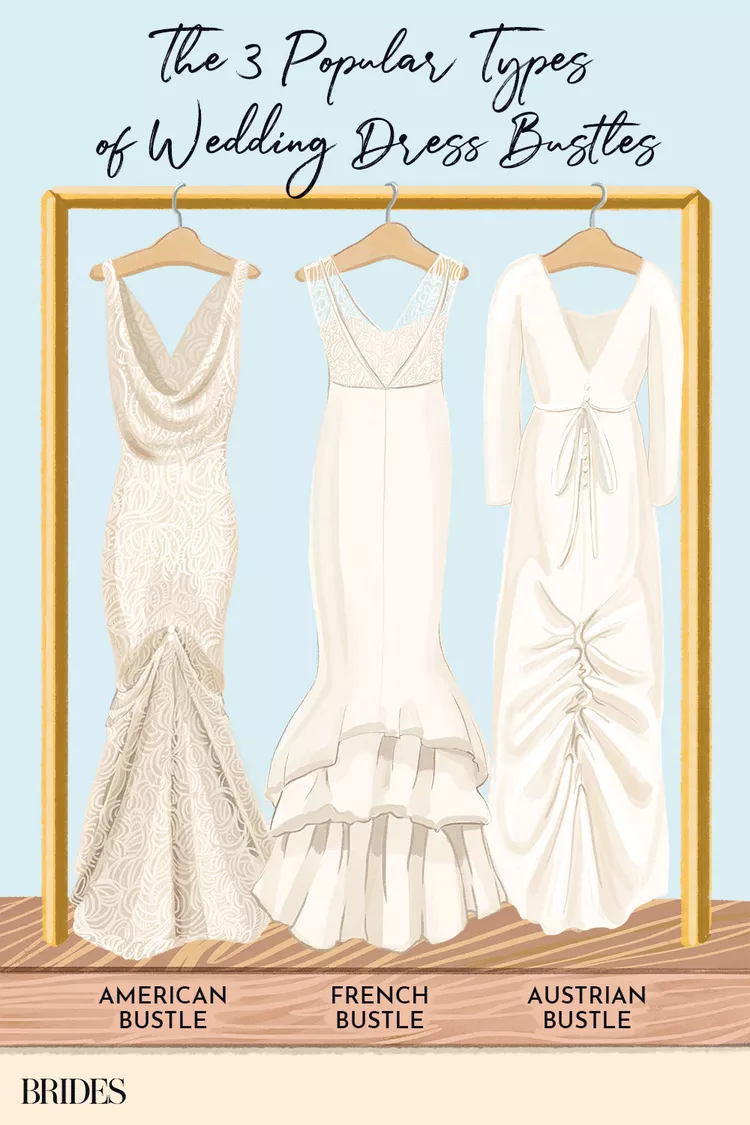
Do You Need a Bustle?
Another great question. Without a bustle, gowns with trains will be stepped on all night long. In order to dance and move around comfortably, the dress must be bustled, which nearly all dresses are. Unless your dress is short or tea-length, you’re going to need one.
Most wedding dresses come without bustles, however, because that’s something the seamstress will need to create to primarily fit your height. Furthermore, there are many different ways in which the seamstress can bustle the dress—which brings us to the various kinds of wedding bustle types.
Read on for a guide to the different styles so that you have a sense of what you might want for your gown.
Types of Bustles
Here, we explain five of the most common wedding dress bustle styles.
American Bustle (aka an Over-Bustle)
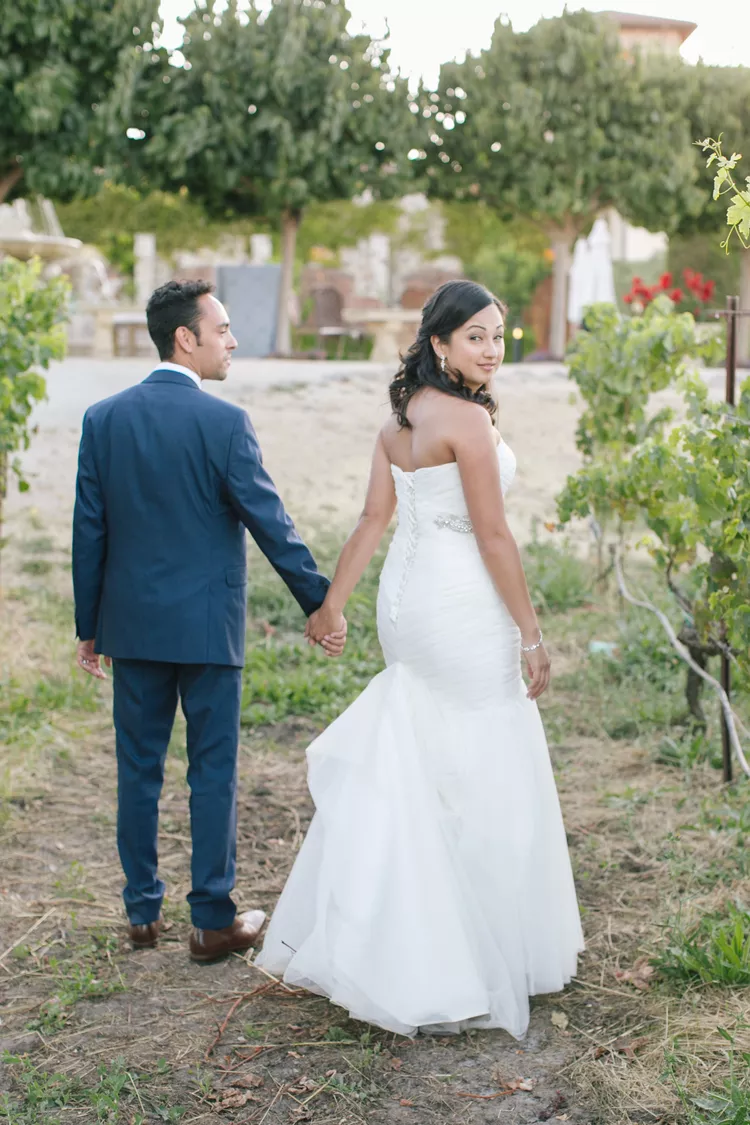
This style has several hooks scattered throughout the waistline of your dress that enables the train to be lifted up and hooked (you guessed it) over the top of the dress itself. This style can have one, three, or even five bustle pick-up points for an even more dramatic look.
Good bustle style for ball gowns.
Austrian Bustle
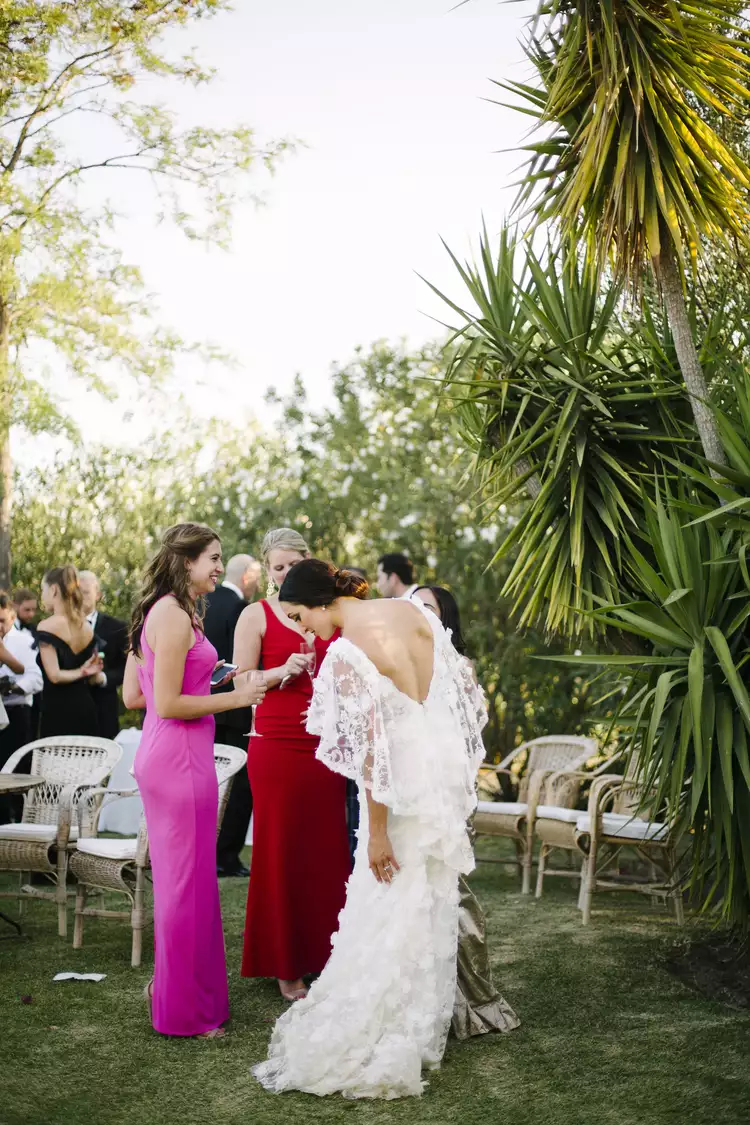
This unique bustle style is quickly gaining in popularity and creates an eye-catching shape. Using this technique, seamstresses gather the gown fabric centrally, down the middle of the gown through the back creating a vertical illusion similar to ruching. Another benefit of this style? It’s particularly easy for bridesmaids to help get into place for you.
By sewing ribbons through the back seam of the gown, it can be pulled to secure both sides together, as an alternative to over or under.
Good bustle style for gowns with intricate detailing.
French Bustle (aka a Victorian Bustle or Under Bustle)
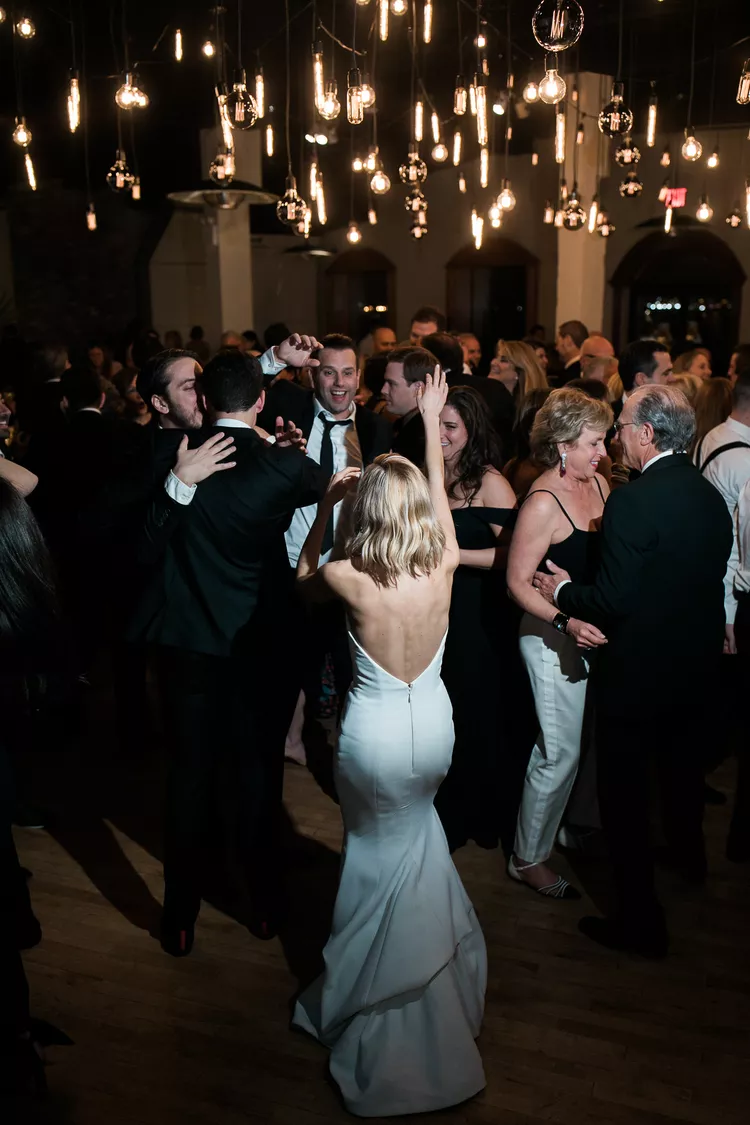
This style favors gowns that have a more natural waistline. This technique is the reverse of the American bustle, as hooks pick up the train of the gown as they tuck under the silhouette itself. Often, ribbons are attached to connect and secure the fabric and can have numerous pick-up points for extra flair. (Think Belle, from Beauty and the Beast).
Good bustle style for A-line dresses or mermaid dresses.
Ballroom Bustle
This bustle tends to transform the dress silhouette from the back, essentially making the train disappear. With a ballroom bustle, it doesn’t even look like the dress has been bustled at all, but rather gives the illusion that it was a floor-length gown all along. To create a ballroom bustle, multiple bustle points are sewn around the bodice, and the fabric folds into itself delicately. This style, however, is typically the most expensive given that more bustle points need to be sewn in.
Good bustle style for ball gowns.
Train-Flip Bustle
Like the ballroom bustle, this style gives the illusion of no bustle at all. In this style, though, the train of the dress flips under the fabric and is pinned into itself, once again giving the illusion of a floor-length gown (with an even fuller bottom, thanks to the extra fabric attached underneath).
Good bustle style for ball gowns.
Tips for Bustling Your Dress
Now that you’re familiar with the different wedding dress bustle types, you’re ahead of the game. But we’ve still got a few more tips.
1. Someone (Not You) Will Need to Learn How to Bustle Wedding Dresses
Once you’re in your wedding dress, you won’t be able to put the bustle in place. Someone else will have to do it. Enlist the help of the maid of honor, a bridesmaid, your mom, or mother-in-law. Whoever you choose, they’ll need to come with you to your final wedding dress fitting so that the seamstress can walk them through bustling up your dress. Even if they’ve bustled a dress before (and they probably haven’t), every wedding dress is different, and different bustle styles work differently. So, it’s best if they can learn how to bustle a wedding dress straight from the expert.
2. Bustles Can Break
No matter how carefully your seamstress stitches your bustle, there’s always a possibility that it can break. Wedding dresses can be very heavy, and you’re relying on a few delicate bustle points to hold the whole operation in place while dancing, walking, and mingling. The solution? Prepare for the worst case scenario by having safety pins, a sewing needle, and clear fishing line on hand in the bridal suite. If your wedding dress was bustled with ribbons and one of them comes loose, a bridesmaid can sew the ribbon back into the dress with the clear fishing line. If the problem is more complicated, you can pin the dress together at the broken bustle point with an oversized safety pin.
3. Don’t Forget to Budget for the Bustle
Wedding dress bustles don’t come cheap. The final price will depend on how many bustle points and what type of bustle you need. The cost of adding a bustle to your wedding dress ranges between $75 to $250 on average, so don’t forget to add that cost to your overall wedding dress budget.
When should I bustle my wedding dress?
Brides will typically bustle their dress after the ceremony and before the reception, though some opt to leave their train flowing for the first dance. Anytime you feel your train would impede walking around comfortably is a good time to bustle a dress.
How long does it take to bustle a wedding dress?
Bustling a wedding dress shouldn’t take longer than a couple of minutes depending on your helper’s familiarity with the process. This is why it’s important for them to attend at least one fitting with you to understand the technique and reduce any fumbling time on the wedding day.
Is it difficult to walk or sit in a bustled wedding dress?
Bustles are intended to add to your comfort and mobility, not impede them. A professionally executed bustle is created to fit your body and the natural fall of the wedding dress, so it shouldn’t be any more constricting than the silhouette’s own design.
